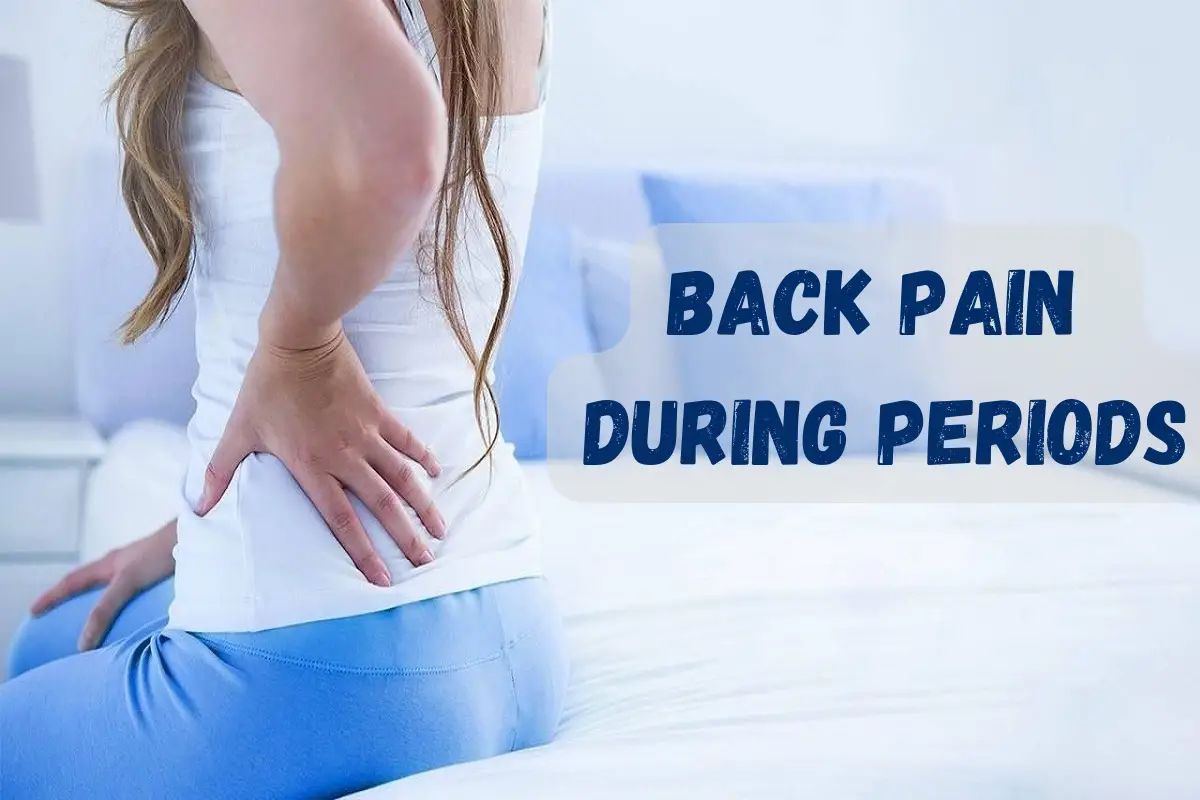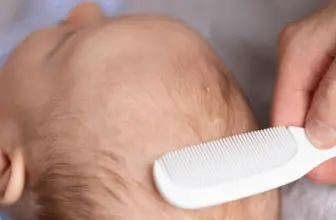What Causes Back Pain During Periods, and What Can You Do about It?

Wondering why do we have back pain during periods? Follow along as Ob-Gyn Katherine Wu, MD and Medela sit down with Dr. Lindsey Shephard from Harvard Medical School and learn why we have back pain during periods and if it’s normal.
If you have back pain during your periods, it is important that you find out what is causing it. And the reason for back pain during periods is usually due to the following 3 main reasons:
- Estrogen causes intense contractions in the womb at the time of ovulation. This causes backache or pain during periods which is due to these strong uterine muscle contractions.
- If a woman suffers from endometriosis, then their condition becomes much more severe, as we already know that endometriosis is an estrogen-sensitive disease.
- Menstrual pain or dysmenorrhea is yet another common cause of low back pain during periods. The increase in uterine activity and pressure, as well as engorgement of the pelvic vessels, stimulates the nerve roots emerging from the spinal cord in the lower back.
That said, have you ever wondered what back pain during periods feels like? It’s not pretty; I can tell you that. But don’t worry, this article is all about period back pain relief and how to deal with it.
What Causes Upper Back Pain During Periods?
Upper back pain during periods is not a rare phenomenon but a common complaint among women who menstruate. It can also be referred to as a menstrual cramp or menstrual backache. Poor postures, injury, improper sitting habits, sleeping in the wrong position, and even your mattress can be the culprit causing upper back pain during periods.
What Causes Lower Back Pain During Periods?
When one suffers from menstrual cramps, the muscles in the lumbar region of the back contract, which causes lower back pain. It is a common symptom women have when they are menstruating. It can be caused by poor posture during menstruation, emotional stress, and hormonal changes.
Apart from these, lower back pain during periods can be caused because of lack of exercise, obesity, and some physical condition like osteoarthritis or herniated disc. The common cause of menstruation associated with lower back pain is because of rapid weight gain due to water retention. With all the extra weight, there is a huge amount of pressure on the lower back.
That said, both upper and lower back can be relieved with over-the-counter medication and by following some simple self-care steps. Keep reading to learn how to get relief from lower back pain and what to do for upper back pain during periods.
Can You Get Period Back Pain While Using Menstrual Cups?
This is a real-life question as daily chores like opening doors and climbing stairs is made difficult while using menstrual cups. There are four reasons why some women experience back pain when using menstrual cups:
- One of the common reasons you may experience back pain when using menstrual cups (particularly during their insertion) is the wrong technique.
- Not using the correct size of menstrual cups has also been linked to causing back pain.
- Using a menstrual cup for a prolonged period of time is another reason. Dr. Shane shares an HPI of a 34-year-old female presenting unusual back pain during the period. After months of use, the patient has adjusted to her period cup. Before long, she forgot it was there. Then one morning, bam, her back hurt and she suddenly remembered that she had been using a period cup for months now!
- Another reason is the prophylactic posture of the body. When you are carrying a menstrual cup in your vagina, it keeps protruding and naturally takes all the load of the uterus.
If you experience back pain while using menstrual cups but no other time, maybe you shouldn’t blame your period. But getting back pain during entire periods has little to do with the device you choose and wear.
What Causes Debilitating Back Pain During Periods?
Although back pain during a period is usually mild, it can still be debilitating. Genetic factors can be responsible for causing problems in the muscles around the spine and pelvis, increasing the risk of issues such as uterine fibroids and pelvic organ prolapse (when any of the organs in the pelvic cavity moves out of its natural position).
Estrogen fluctuations, genetics, or lack of exercise all lead to an imbalance in the muscles surrounding your lower back, greatly affecting your body posture, which may result in downward pressure on the lower spine and pelvis. This can be corrected with corrective exercises that strengthen core muscles and enhance stability.
When Should You Be Concerned With Back Pain During Periods?
As per the American College of Obstetricians and Gynecologists, 30-50% of women will experience some form of back pain during menstruation. Serious back pain could be a manifestation of period cramps, but it can also indicate other serious health issues. It can also arise from illness (e.g., premenstrual dysphoric disorder) or conditions such as endometriosis and fibroids.
Here are the four signs that your back pain may be a cause for concern:
- You’ve begun to have back pain during your period, but you’ve never experienced any significant discomfort before. This could be a sign that something’s not right—like a metabolic disorder or even cancer.
- Your back pain is constant and chronic, lasting throughout the menstrual cycle. This could mean there’s a problem with one of your ovaries.
- Your back pain is restricting your range of movement. This could be a sign of the onset of sciatica.
- The pain is unbearable/severe. Most women have some back pain during their period, but you shouldn’t have to lie in bed all day because of it. If it’s that bad, something else might be wrong.
While a little bit of pain is pretty common during your period—whether it’s in your abdomen or elsewhere — Dr. Shepherd says there are certain signs that you should see a doctor if you’ve been experiencing back pain during your period. “Back pain is something that should always be evaluated by a physician if it started out of nowhere or if it is constant throughout the month,” she says.
How Does A Doctor Diagnose Back Pain?
Diagnosing back pain is a methodical, mostly non-surgical process. Your primary care physician will usually be the one to diagnose your back pain, but you might be referred to a back specialist (an orthopedic surgeon, neurologist, or physiatrist) if the problem isn’t responding to treatment or is severe enough to warrant it. Here’s what the doctor will probably do:
If you visit a doctor or a physician, they will make a systematic assessment to diagnose your back pain. Almost all doctors follow these step-by-step protocol.
HPI:
First, your doctor will take notes of your medical history and assess your condition based on the following nine elements:
- Location –Where does your back hurt during periods? Your provider will determine the location of your pain, as different causes are responsible for different types of back pain, such as lower back pain (lumbar) or upper-back pain (thoracic), or neck pain (cervical).
- Onset/Duration – Do you get back pain for days before period, during menstruation, or late after periods? How long does it last?
- Timing – How often do you experience back pain during periods? Is the pain constant or intermittent?
- Context – What were you doing, if anything, when you first experienced back pain while having periods?
- Quality – How does your back pain feel like? (E.g., stabbing, localized, radiating, dull, sharp, shooting, aching, etc.)
- Severity – How bad is the problem? (Frequently rated on a scale of 1 to 10)
- Exacerbating/Relieving – Does anything else make the back pain better? Does the pain exacerbate with movement?
- Modifying factors – What makes the symptoms better or worse?
- Associated symptoms – Are you suffering from any other symptoms like fever, chills, neck or joint pain?
Physical Examination
Once noted, the doctor will conduct a physical examination. The physical examination is likely to involve checking your posture and range of motion and examining the regions of your body that are causing you discomfort. The doctor may also feel around your spine and abdomen for signs of tenderness.
Assessment & Plan
Based on the HPI and the physical examination, the doctor will make an assessment and prescribe back pain medications. If the doctor suspects any cause of concern (e.g., disk abnormalities), he/she will schedule an MRI and a follow-up visit for further evaluation. The exact treatment will depend on the final assessment following the result of the MRI, but treatments might include exercises, medications, or surgery.
That said, if you’re suffering from mild back pain during periods, you hardly require any medical intervention. Well, how to reduce back pain during periods naturally? You can take several measures and make the pain easier to bear.
Here, Ob-Gyn Katherine Wu, MD shares some natural options and Back Pain During Period Home Remedies to get relief from spinal or back pain during menstruation.
How To Ease Back Pain During Periods?
Although some women suffer from severe back pain during periods, this is not always the case. In most cases, menstrual pain can be managed with a few simple measures and lifestyle changes.
Here are five ways you can get ease period-related back pain at home:
- Using yoga for back pain during periods can help alleviate back pain during periods. It is an effective option for relieving back pain during your period as it helps relax your central nervous system. However, if you’re experiencing severe menstrual cramps, begin with slow and mindful movements.
- Adding foods that help get relief from cramps and back pain during periods is also a good idea. An anti-inflammatory diet can help ease period-related muscle cramps and back pain.
- Consider sleeping on an extra firm mattress topper. It doesn’t have to be the best firm mattress topper for back pain; rather, choose one based on the firmness level that you find suitable.
- A warm bath helps ease muscle stiffness and reduce pain in the back during periods. You may also use a lidocaine patch for back pain relief if you want a fast-acting option. These patches also provide a cooling sensation.
- When you have your period, use the right products. Use menstrual products that are comfortable for you. If you use tampons, choose the size depending on your flow. If you use menstrual cups, don’t leave them longer than twelve hours because the physical expansion of the cup can put stress in the pelvic area and add to back pain.
Conclusion
Let’s recap: Why do we have back pain during periods? Most women get back pain at the beginning or end of their periods due to muscle strain. But various factors also come into play, including posture, pregnancy, and hormonal changes.
While some factors are more common than others, one thing is constant: back pain during menstruation is inevitable. And in all likelihood, it is something that only you, the woman experiencing it, can determine.
When you’re experiencing back pain during your period, it’s hard to know how much is just normal, how much is due to hormonal changes, and how much is actually a problem. If the pain is too severe, seek out medical help or advice from a health professional when in doubt.
However, certain medical conditions can be more serious during this time of the month—conditions that require more time, attention, and resources than would be readily available from a GP. So when it comes to diagnosing and treating back pain during the menstrual cycle, the best place to go for that advice may be a gynecologist, not a general practitioner.
Sources
- Dysmenorrhea: Painful Periods | American College of Obstetricians and Gynecologists. (Accessed at https://www.acog.org/womens-health/faqs/dysmenorrhea-painful-periods)
- Uterine Fibroids – Symptoms and Causes. (Accessed at https://www.mayoclinic.org/diseases-conditions/uterine-fibroids/symptoms-causes/syc-20354288)
- Premenstrual Dysphoric Discorde (Accessed at https://www.hopkinsmedicine.org/health/conditions-and-diseases/premenstrual-dysphoric-disorder-pmdd)
- (Accessed at https://www.mayoclinic.org/diseases-conditions/endometriosis/symptoms-causes/syc-20354656)
- “Back Pain Fact Sheet:, NIH National Institute on Neurological Disorders and Stroke. (Accessed at https://www.ninds.nih.gov/Disorders/Patient-Caregiver-Education/Fact-Sheets/Low-Back-Pain-Fact-Sheet)
- Back Pain Medications. (Accessed at https://www.webmd.com/back-pain/features/medication)
- Hines R, Keaney D, Moskowitz MH, Prakken S. Use of lidocaine patch 5% for chronic low back pain: a report of four cases. Pain Med. 2002;3(4):361-365. doi:10.1046/j.1526-4637.2002.02051.x (Accessed at https://pubmed.ncbi.nlm.nih.gov/15099246)





